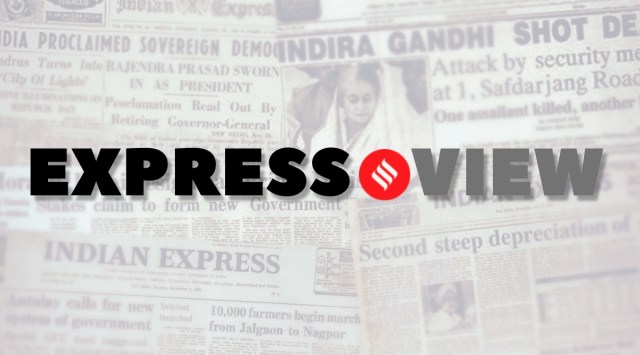
The high turnout in Tripura on Thursday is in line with the past election trends and is highly reassuring. One, it indicates that the electorate is invested in democracy and the vote is their preferred instrument for political change. This trust is significant, particularly because the state has a history of insurgency. Two, the large turnout comes in the backdrop of complaints by the opposition parties against the ruling BJP of intimidation: The Opposition petitioned the Election Commission multiple times and even held rallies to voice their concern. If the charges are true, the turnout suggests that voters have refused to be cowed down by intimidation or physical violence. It suggests a vibrant democracy, where politics seems to be defined by debate and competition, the occasional bursts of violence notwithstanding.
The assembly election in Agartala is also interesting because a new entrant, with a new politics, is challenging the established parties in the state. For decades, Tripura was a bipartisan state where the Congress and the CPM fought for dominance. The picture changed in 2018 with the entry of the BJP, which has since emerged in the pole position. Five years later, the TIPRA Motha, a new party led by Pradyot Manikya Debbarma that claims to represent the indigenous communities, emerged on the scene with a new narrative. The Motha seems to lack the social base to win a simple majority in the 60-seat legislative assembly, but it has acquired the heft to influence the outcome in the 20 seats reserved for scheduled tribes and a few general constituencies. The results in Tripura may not have a direct impact on the national picture. However, a second consecutive win would give a fillip to the BJP’s ambitious plans to dominate politics in the Northeast: Since 2014, the BJP has won multiple elections in Assam, Arunachal Pradesh and Manipur. A victory for the Left Front-Congress partnership may lead to the two parties to work closer, beyond Tripura. Rivals for decades, the rise of the BJP as a dominant force has brought the Congress and the CPM together in the state and even organise joint rallies. Meanwhile, a good show by the Motha could give an impetus to the politics of indigeneity that has a resonance in the Northeast.
The campaign wagon now moves to Nagaland and Meghalaya, where elections are due on February 27. The framing of the Tripura elections — as a contest between regional forces (the CPM and Congress including) and the promise of “double engine sarkars” that deliver growth — is likely to set the pattern even in these two states, where the BJP is aiming to emerge as a serious contender for power while fighting regional outfits.